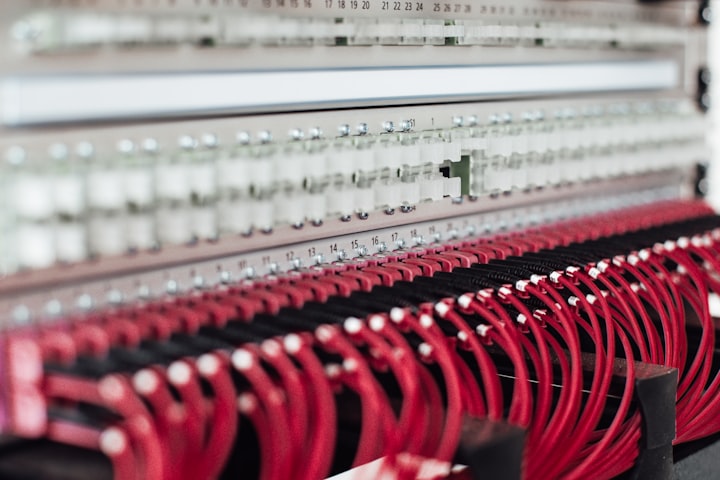Internet of Things (IoT)
Connecting the World

Internet of Things (IoT): Connecting the World
Introduction to the Internet of Things (IoT):
The Internet of Things refers to the network of physical devices, vehicles, appliances, and other objects embedded with sensors, software, and connectivity, allowing them to collect and exchange data. IoT enables the connection and communication between these devices, leading to automation and intelligent decision-making.
Smart Home Technology:
IoT has revolutionized the concept of smart homes by connecting various devices, such as thermostats, lighting systems, security cameras, and appliances. These devices can be controlled and monitored remotely, enhancing convenience, energy efficiency, and home security.
Industrial Automation and Industry 4.0:
IoT plays a pivotal role in industrial automation, enabling machines and equipment to communicate and collaborate. Industry 4.0 utilizes IoT technologies to create smart factories with interconnected systems, optimizing production processes, reducing downtime, and improving overall efficiency.
Transportation and Smart Cities:
IoT is transforming transportation systems and contributing to the development of smart cities. Connected vehicles, traffic management systems, and intelligent transportation infrastructure improve traffic flow, reduce congestion, and enhance safety and sustainability.
Healthcare and Wearable Devices:
IoT has revolutionized healthcare through wearable devices that monitor vital signs, track fitness activities, and enable remote patient monitoring. These devices provide real-time health data, facilitate early detection of health issues, and improve personalized healthcare delivery.
Agriculture and Smart Farming:
IoT technologies are being adopted in agriculture to enable smart farming practices. Sensors, drones, and IoT platforms help monitor soil conditions, optimize irrigation, and manage crop health. This improves crop yield, reduces resource wastage, and promotes sustainable farming practices.
Energy Management and Smart Grids:
IoT facilitates efficient energy management through smart grid systems. Connected devices and sensors enable real-time energy consumption monitoring, load balancing, and demand-response mechanisms. This leads to improved energy efficiency, cost savings, and grid stability.
Environmental Monitoring and Conservation:
IoT plays a crucial role in environmental monitoring and conservation efforts. Connected sensors and devices collect data on air quality, water quality, and biodiversity. This data helps in early detection of environmental issues and supports conservation initiatives.
Retail and Inventory Management:
IoT enhances retail operations by improving inventory management and customer experiences. Connected sensors track inventory levels, monitor product conditions, and automate reordering processes. IoT-powered beacons and personalized marketing enable targeted and seamless customer interactions.
Asset Tracking and Supply Chain Management:
IoT enables real-time tracking and monitoring of assets throughout the supply chain. Connected sensors and GPS technologies provide visibility into the movement and condition of goods, optimizing logistics, reducing delays, and minimizing losses.
Smart Energy and Home Automation:
IoT enables smart energy to management within homes, allowing homeowners to monitor and control energy consumption. Connected devices, such as smart thermostats and smart appliances, optimize energy usage, leading to cost savings and reduced environmental impact.
Safety and Security Systems:
IoT enhances safety and security systems through connected devices and sensors. Smart surveillance cameras, motion sensors, and alarm systems can detect and alert in case of suspicious activities or emergencies, improving overall safety and peace of mind.
Waste Management:
IoT technologies are being employed in waste management to optimize collection routes, monitor trash levels in bins, and improve waste disposal processes. This results in efficient waste management, reduced operational costs, and a cleaner environment.
Remote Monitoring and Maintenance:
IoT enables remote monitoring and maintenance of equipment and infrastructure. Connected sensors can detect anomalies, predict maintenance needs, and trigger maintenance actions. This improves equipment uptime, reduces downtime, and optimizes maintenance costs.
Education and Smart Classrooms:
IoT technologies are transforming education by creating smart classrooms. Connected devices
About the Creator
Abdullahi Mustapha
Abdullahi: Skilled forex trader with 3 years' experience. Amazon KDP expert and programmer. Pursuing a diploma in computer science. Youthful, yet wise. Passionate about technology and finance. Ready to make an impact in forex,






Comments
There are no comments for this story
Be the first to respond and start the conversation.